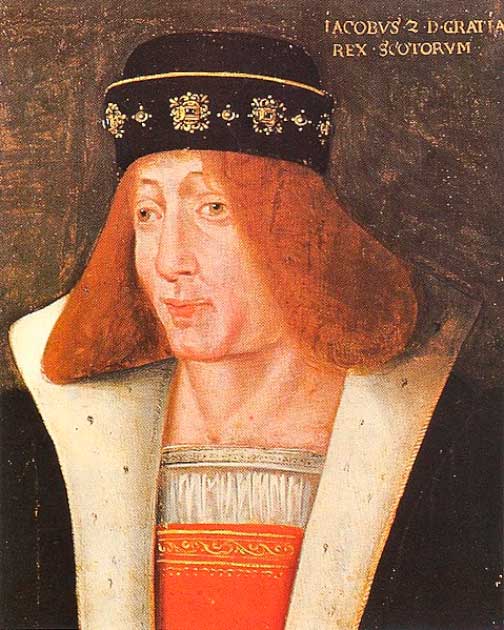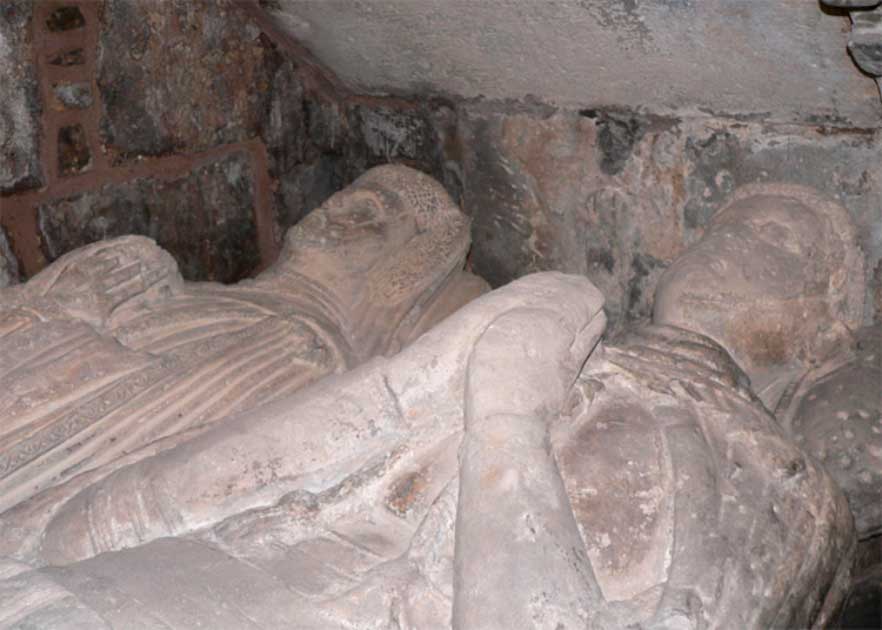Everyone, regardless of if you watched the show or not, has heard about the infamous episode of Game of Thrones and the “Red Wedding”. Brutal and shocking in the extreme, it seems that George R.R. Martin was inspired by genuine Scottish history.
While the real event wasn’t a wedding followed by betrayal, the events of the Black Dinner are very similar to the Red Wedding. Medieval Scotland saw an incredible amount of power grabs by both England and the Scots.
The Black Dinner was one such attempt at a power grab against members of an extremely powerful clan, the Clan Douglas. What happened during the Black Dinner, and where did George R.R. Martin find his inspiration?
King James II of Scotland and his Regent
In 1437, following the assassination of his father, King James II of Scotland was crowned the country’s new king. Immediately, there was a huge problem with the new king, chiefly that he was six years old: clearly unfit to control an entire country.
A regent was appointed to rule in his stead until he was old enough to lead his country. The man selected to be the regent was Archibald Douglas, 5th Earl of Douglas. Archibald was the uncle of the child king and was a member of one of the most powerful clans and noble houses in 15th-century Scotland.
The Douglases’ head of house, Sir James Douglas, was a successful commander during the War for Scottish Independence. He became the confidant of the King of Scotland in the early 13th century and was given the nickname “the Black Douglas” due to the ferocity of his military tactics and the rage with which he attacked the enemy.

The successor heads of the house kept this name to stress the military prowess of the family and to associate themselves with their illustrious ancestor. Over time the Douglas family prospered and developed into four factions, the two main ones being the Red Douglases and the Black Douglases.
- Murder of Henry Stuart, Lord Darnley of Scotland
- How the Darien Scheme Changed the History of Scotland’s Independence
The Black Douglas family line had the most members of the nobility and King James II was from that line. The Red Douglases were strong, but were only granted the title of Earls of Angus because they came from a line that began with an illegitimate son. This created friction within the great clan, with the Red Douglases wanting to defeat the Black Douglases and, ultimately, to ascend the throne as kings of Scotland.
The Black Dinner
After the assassination of King James I, the new king’s uncle, Archibald Douglas, became the head of government after he was appointed the Lieutenant General of Scotland and served as the regent king. Archibald Douglas of the Black Douglases did not rule for long however, dying in 1439 after only two years as regent.
When Archibald died, three powerful lords agreed to share power and act as a trio of regents until James II reached his 18th birthday. The three were Sir Alexander Livingston of Callendar, William Chrichton, Lord Chancellor of Scotland, and James Douglas Earl of Avondale, who was a Red Douglas.
Sometime in 1440, the three lords conspired to end the power of the Black Douglas side of the family. The Black Douglases were seen as a political threat to other rival clans, and a plan was quickly put into action.
On November 24, 1440, the lords extended invitations to the 6th Earl of Douglas and his brother to come to James II’s castle in Edinburgh for a banquet dinner. The 6th Earl of Douglas, William Douglas, was 16 years old, and his brother David Douglas is believed to be around 12 years old at the time.
This dinner invitation appeared to be an appropriate gathering for the 10-year-old James II. The three regent lords would be there to supervise along with Sir. Malcolm Flemming of Cumbernauld, the advisor of the 6th Earl of Douglas.
It was said that either a black boar or black bull’s head was placed in front of the Earl as the main course. The heads of these animals were symbols of death, though the young boys seemed unaware of the symbology and were described as “having a good time.”
The head was also a signal for Lord Crichton and his men who were present at the dinner that it was time to put their plan into action. The Earl and his brother were snatched by Lord Crichton’s men and dragged out of the castle. While James was left behind yelling that it was against the code of hospitality.
A Breach of Etiquette
In medieval times, the code of hospitality included an unwritten rule that guests were protected from harm from their hosts. The dinner and castle also extended into that rule as well. Violation of the hospitality code was punishable by death as an act of dishonor and trickery.
The Earl and his brother being removed from the castle in such a way violated the code. It was also inappropriate considering the boys were the first cousins once removed, thus relatives of the young James II.
- The Loch Arkaig Treasure: Where is the Jacobite Gold?
- Terrifyingly Destructive: What was Edward I’s Warwolf?
One version of the dastardly Black Dinner states that the guards at the castle barred James from running after his guests. On the hill, the boys were charged (falsely) with illegal protests and condemned as traitors of the crown.
Quickly following the charges, the two boys were given a guilty verdict and sentenced to death which was carried out that very evening: the two boys were beheaded. Other accounts exist, such as one which says that James II was brought to the “trial” and begged for his guests to be spared, and was ignored.
The name the Black Dinner was given to this event later in history and could have come from the Black Douglases’ kin being beheaded. It might be because of the black animal head on the table or the atrocity that happened that night.
The Reckoning
Shortly after the Black Dinner, the Red Douglas clan attacked the castle of James II. Lord Crichton had beheaded the boys and assumed “ownership” of the castle, so was quick to surrender the castle to the Red Douglases.

James Douglas then became the 7th Earl of Douglas, absorbing the power and titles of the murdered 6th Earl of Douglas. The goal of the Black Dinner was to break the power of the Douglas clan but they had overlooked one aspect of the situation: James II was still king.
During his reign and his adult life James often found himself in conflict with the Red Douglases, presumably emboldened by their brutally successful brand of realpolitik. The Black Dinner seemed to stay in King James II’s mind however, because it happened again.
Once a grown man and king in his own right, King James II invited the 8th Earl of Douglas to meet him at Stirling Castle to “discuss their differences”. When the Earl of Douglas was asked to confirm his loyalty to King James, he refused to do so.
In response, King James was said to have stabbed the Earl two dozen times, and thrown his dead body out of a window. Yet again, an Earl of Douglas was murdered during the rule of King James II of Scotland. Justice for the Black Douglases had come, and the sentence was apt.
Top Image: A bull’s head was placed in front of the victims at the Black Dinner, a symbol of their doom. Source: Alexurs / Adobe Stock.
By Lauren Dillon